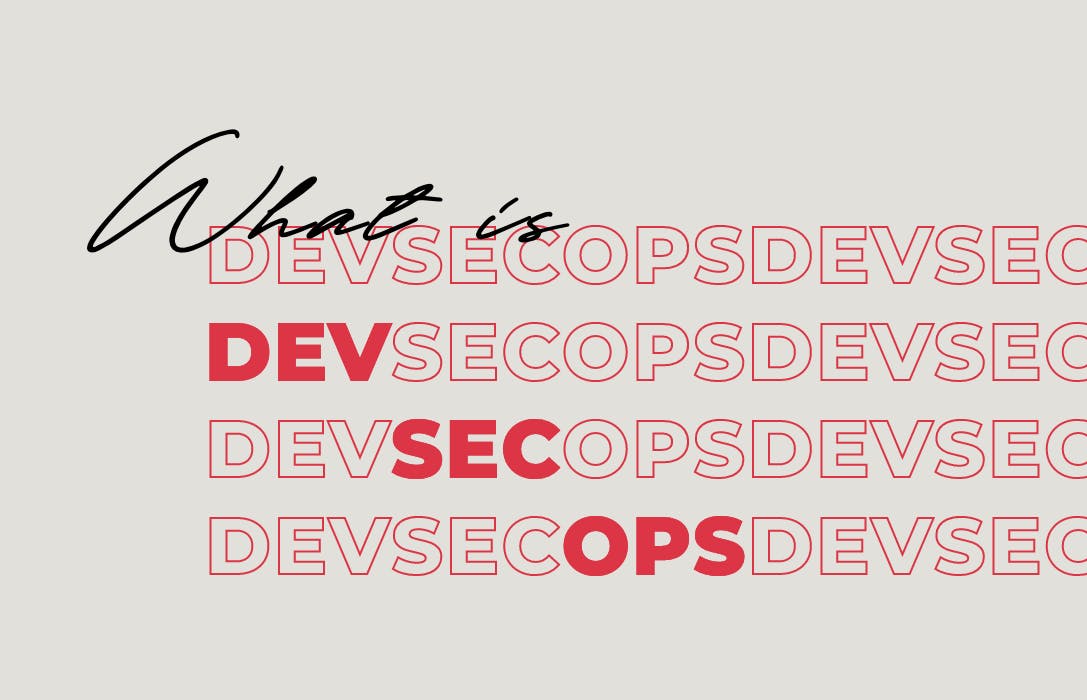As its name suggests, DevSecOps is a combination of DevOps and Security. DevOps teams have enabled many technological developments, but the addition of security assessments at the end of the development process can take many projects back to the drawing board at their last stage, or leave organizations open to threat actors. Now, organizations practice DevSecOps to make software security a key component of the development cycle.
What Is DevSecOps & Why Is It Important?
DevSecOps is a framework that organizations use to manage their development process to include software security assessmentssoftware security assessments as a key component in all stages of the development cycle.
In the past, DevOps and security testing were separate functions. A product or software being developed would first be coded by the software engineers, only for the software security teams to run checks on them right before deployment, or worse, after being deployed, leaving organizations vulnerable to threat actors.
In both situations, inefficiencies arise when security issues are found, since the code would have to be fixed before being deployed. In latter cases, such codes would have to first be withdrawn, fixed, and then re-deployed, making remediations costly and delaying releases.
These inefficiencies are amplified by the now quicker development and deployment processes made possible with cloud computingquicker development and deployment processes made possible with cloud computing. After all, a CI/CD (Continuous Integration & Continuous Delivery) pipeline was supposed to allow for continuous delivery, and such inefficiencies negate the process.
To reduce these inefficiencies, DevSecOps is meant to keep security at the top of mind throughout the entire CI/CD process, from coding and testing to responding to new-found security issues.
Deploying The Concept Of DevSecOps In Your Organization
DevSecOps is a mindset to be instilled
More than a set of rigid rules and how-tos, DevSecOps is a mindset that needs to be instilled in all members of the team. Instead of approaching security as an afterthought, all stakeholders should be taught to adopt a security-first mentality. Educate them on the latest security threats and the importance of fixing these threats, encourage testing for security early on in the development process. In other words, shift left.
Marrying security and speed of delivery
When transiting the team from a DevOps to DevSecOps approach, resistance is common. However, it is key to emphasize the purpose of the switch, which is to marry speed of delivery with securitymarry speed of delivery with security. One might think they are mutually exclusive, but with proper implementation and automation, it can be done.
Key Components of a DevSecOps approach
To put DevSecOps into practice, a few key components to consider include:
Shared Responsibility for Security
Security should be at the forefront of everybody’s work, and so everyone should share the responsibility for it. Your engineering team may not have full security know-how from the get-go, but employing tools that educate them on vulnerabilities and fixes can go a long way in instilling such responsibility.
Compliance Monitoring
With the increasing awareness and importance of security, compliance standards like SOC 2, ISO 27001, and PCI-DSScompliance standards like SOC 2, ISO 27001, and PCI-DSS, start to come into play. A well-thought DevSecOps approach should consider if this applies to your organization, and if so, include constant checks for compliance. It is also key to think of how to access such compliance information in your work (think vulnerability management and logs) in the event of an audit.
Automated Vulnerability Assessments
Before working to set up automations, take a step back and evaluate your entire process. From the entire CI/CD pipeline to application architecture, consider which to prioritize and automate checks for.
Automating security checks for vulnerabilities can increase efficiency and decrease the likelihood of human error and oversight. This is especially so for complex codes or cloud infrastructure configurations, where there are many minute details to check for.
Continued Alerting & Quick Response
Set up ongoing alerts for findings so you never miss one — it’s also a bonus if these findings can be integrated into your CI/CD pipelines (eg. JIRA, GitLab) for efficiency.
Response times also matter — explore having a tool that provides remediation guidelines, or utilize features available with your cloud provider to automate patches or fixes to minimize time spent there.
Communication
Use instant communication channels like Slack to share information about security issues as quickly as they arise. In addition, DevSecOps is an approach that needs to be constantly updated within the team. It does not look the same at every organization, so keeping lines of open communication for feedback to improve is important.
Adopting DevSecOps Today
Should you want help implementing DevSecOps in your organization, our CISO-as-a-Service consultantsCISO-as-a-Service consultants can help you map out a process. If you’re looking for a tool to help you decipher compliance in the cloud and maintain automated checks for your cloud configurations, check out WardenWarden, our SaaS CSPM toolCSPM tool.



